Exploring the Architectural Beauty of Dubai's City Gate Towers
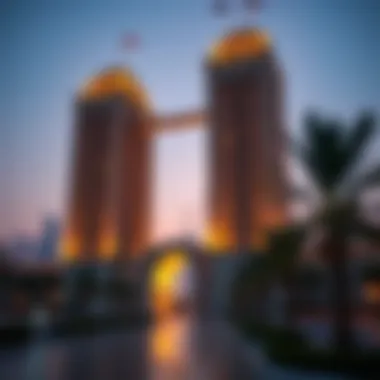
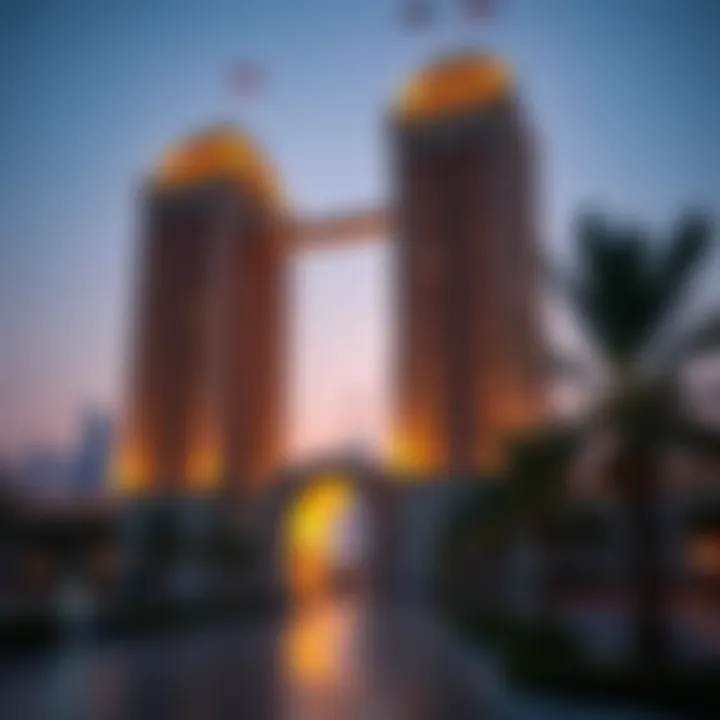
Intro
Dubai is a city that continually redefines its skyline and architectural boundaries. Among the standout structures are the city gate towers, which blend aesthetic elegance with functional prowess, embodying the spirit of this vibrant city. This article dives into the architectural significance and the mesmerizing visual appeal of these towers, emphasizing the power of photography in capturing their essence. The aim is to not just highlight their aesthetic beauty but to explore how these towers resonate within the broader context of Dubai’s real estate landscape.
The allure of these structures goes beyond mere visuals; it involves an intricate tapestry of history, design evolution, and economic potential. As the city thrives, the gate towers stand as significant icons that symbolize the promise and opportunity found in Dubai's ever-growing real estate market. This article also touches upon the impact that photography has in documenting these architectural marvels, offering insights into their role in modern culture and investment prospects.
As we proceed through this exploration, expect to encounter engaging photographs that showcase not only the towers themselves but also the life and culture surrounding them, making for a comprehensive resource for investors, property managers, and home buyers.
Prolusion to City Gate Towers
City gate towers are more than just architectural marvels; they are landmarks that embody the spirit and culture of a city. In the context of Dubai, these structures stand as gateways that welcome visitors and locals alike, serving as symbols of progress and innovation. As we delve into the essence of city gate towers through photography, it’s essential to understand their significance not only as aesthetic entities but also as vital components of urban identity.
Defining City Gate Towers
City gate towers traditionally represent the entry points to urban areas, often adorned with unique designs that reflect local culture. In Dubai, the definition expands beyond mere function; these towers encapsulate the city's rapid development and luxurious lifestyle. They are often tall, grand, and strategically located, presenting an impressive sight against the skyline. Photography plays a crucial role in capturing their unique architectural features and helps in appreciating their place in Dubai’s urban fabric.
These towers are designed with an understanding of both historical context and contemporary needs. By defining what city gate towers are—exemplifying innovative engineering, aesthetic beauty, and cultural undertones—we set the stage for exploring their broader implications in the sections that follow.
Cultural and Architectural Significance
The cultural significance of city gate towers in Dubai cannot be overstated. They are emblematic of the city’s journey, signaling its transformation from a small trading port to a global metropolis. Architectural forms of these towers often incorporate elements of Islamic design, which harmoniously blends with modern aesthetics, creating structures that resonate with both locals and tourists.
"The architectural significance lies in their storytelling; each layer tells a tale of Dubai’s evolution."
Moreover, these towers reflect Dubai's ambitions and values. The emphasis on luxury, innovation, and artistry is evident in their facades and overall designs. As photographic subjects, they serve as conduits of cultural expression, allowing viewers to experience their grandeur from various perspectives.
In summary, the exploration of city gate towers in Dubai offers insight into a living history that connects modern architectural practices with rich traditions. This journey not only enhances our understanding but also allows property investors and culture enthusiasts alike to appreciate the symbiotic relationship between Dubai's architectural landscape and its cultural narrative.
Historical Context of City Gate Towers
The city gate towers of Dubai hold more than just architectural marvel - they embody the evolution of urban storytelling and the relationship people have with their environment. Their historical context is crucial for understanding how these structures have become cultural icons and how they reflect the rapid development in Dubai. This section will explore the journey of urban architecture in Dubai, and the influential architects who shaped the skyline.
Evolution of Urban Architecture in Dubai
Dubai’s transformation from a modest coastal town into a bustling metropolis is a tale etched in its skyline. At the heart of this transformation stands the city gate towers, showcasing the fusion between modernity and tradition. Over the past few decades, Dubai has seen architectural styles evolve dramatically. Whereas early designs favored simple structures adorned with local materials, the rise of globalization led to a rush of foreign influence—designs that are bold, sleek, and ambitious are now the norm.
The 1990s was a pivotal decade, marking the beginning of a architectural renaissance. The urban landscape began to reflect a new ambition, showcasing ever taller skyscrapers, many of which incorporated glass and steel, bringing in a hint of international flair. The introduction of structures like the Burj Khalifa, which towers over the Dubai skyline, has served as both inspiration and a benchmark for city gate towers that followed.
The city gate towers often reflect the challenges and advantages of urban growth, with architects battling the harsh desert environment while trying to create aesthetically pleasing structures that can stand the test of time. Each tower narrates a unique story about the aspirations of its designers, the city’s cultural heritage, and the ever-changing societal needs.
Influential Architects and Designers
The design of Dubai’s city gate towers owes much to a roster of renowned architects who have shaped the modern narrative of the city. Their innovative designs are not only lines and forms but messages about the city's future.
- Zaha Hadid, known for her futuristic designs, has contributed to some of Dubai’s major structures. Her philosophy of blending organic forms with the urban fabric has influenced many city gate towers, making them not just buildings but experiences.
- Norman Foster, another pivotal figure, designed structures that marry sustainability with aesthetic brilliance. His buildings often feature renewable energy sources and are carefully positioned to maximize natural light, which is essential in a city characterized by its harsh sunshine.
- Tadao Ando, with his emphasis on simplicity and the use of concrete, has introduced an understated elegance to modern designs in Dubai, ensuring that city gate towers resonate with clean lines yet remain functional.
In summary, the historical context of city gate towers in Dubai reveals a landscape that is rich with architectural diversity and cultural significance. The evolution of urban architecture and the impact of influential designers illustrate a continuously transforming city, making these towers monuments to not only a city's journey but also to its future aspirations.
"Each city gate tower is a chapter in the skyline’s storybook, where past and future collide and collaborate."
As we explore further, we will see how the architectural characteristics have developed, solidifying their standing as not merely structures but as essential elements of Dubai's identity.
Architectural Characteristics
Understanding the architectural characteristics of the city gate towers in Dubai provides invaluable insights into their design and significance. An analysis of structural elements, material choices, and the integration of sustainability reflect not only the aesthetic appeal of these towering structures but also their functional integrity and connection to the environment. As both cultural symbols and functional edifices, their design embodies the spirit of modernization while paying homage to tradition. Their role in the urban landscape is, therefore, multi-faceted, making them fascinating subjects for study from numerous angles, including investment and community dynamics.
Material Use and Sustainability
The selection of materials in the construction of the city gate towers is crucial due to the harsh climate of Dubai. Concrete, steel, and glass are the primary components, with each serving specific purposes. Concrete provides durability while reflecting contemporary architectural trends. Steel is favored for its strength-to-weight ratio, allowing for elegant designs that soar high without compromising structural integrity. Furthermore, glass offers not just aesthetic benefits but helps in maximising natural light, creating a welcoming ambience inside the buildings.
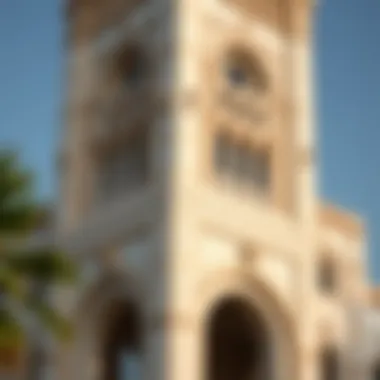
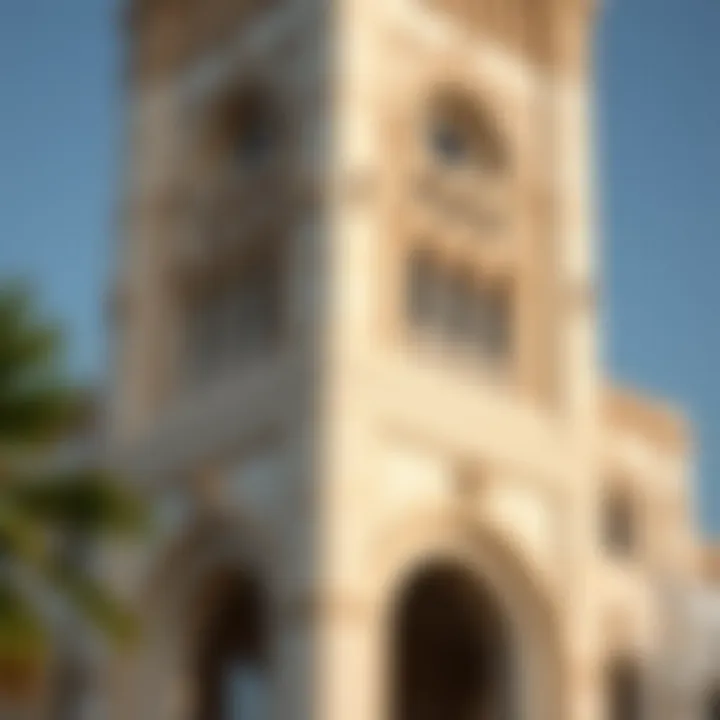
Sustainability has taken center stage in the architectural design of recent towers. Builders are adopting environmentally friendly materials and techniques, incorporating solar panels and green roofs. These innovations not only reduce energy consumption but also visually integrate the buildings with their urban environment, contributing to a healthier city.
For instance, the Burj Al Arab employs advanced technologies to maintain comfortable temperatures inside. It operates with energy-efficient systems that considerably lessen the carbon footprint. Sustainable designs resonate well with property investors who are increasingly more inclined to support projects that prioritize eco-friendliness in a city known for its rapid growth.
Design Innovations and Trends
The city gate towers stand as testaments to innovation in urban architecture. In recent years, the trend of organic architecture has emerged, where buildings mimic natural forms and movements, distinguishing them from the rigid lines of traditional skyscrapers. The application of parametric design allows architects to create unique, fluid shapes that conform closely to functional requirements while fostering a sense of individuality for each tower.
This evolution aligns with current demands for flexibility in urban spaces. Notably, structures like the Cactus Tower highlight how creative forms can harmonize functionality with an identity that speaks to the cultural landscape of Dubai.
As the city gathers momentum towards achieving a smart city framework, the incorporation of technology into the physical constructs is becoming more prevalent. Towers now integrate smart systems for building management, which controls lighting, climate, and security through interconnected devices. Such advancements not only enhance the living experience but also optimize operational efficiency, presenting attractive prospects for property developers and investors eager to engage with cutting-edge urban living.
"As we continue to innovate in design and material use, Dubai's city gate towers will not only symbolize the skyline but also the future of sustainable living."
In summary, the architectural characteristics of city gate towers in Dubai reveal a blend of tradition and forward-thinking. The choices architects make regarding materials and design reflect both regional needs and global trends, providing a backdrop for potential investments and enhancing the overall urban experience.
Prominent City Gate Towers in Dubai
City gate towers in Dubai serve as more than mere architectural marvels; they symbolize the city’s ambitions, heritage, and ongoing transformation. These iconic structures reflect the merging of modern aesthetics with traditional design principles that characterize Dubai’s skyline. Highlighting the key towers not only encapsulates architectural innovation but also provides insight into what defines the urban fabric of this bustling metropolis.
Modern Dubai is a testament to rapid development and investment opportunities. For investors, property managers, and home buyers, understanding the significance of these city gate towers becomes imperative. They are often located at strategic junctures, functioning as gateways that enhance accessibility and connect various urban elements. The towers do much more than house commercial spaces; they embody the essence of thriving communities and increasing property values.
Key Examples and Their Features
When it comes to prominent city gate towers in Dubai, several stand out due to their unique features and immediate cultural relevance. Notable examples include:
- Burj Khalifa: Arguably the crown jewel, it soars to a height of 828 meters and offers panoramic views of the cityscape. Its design reflects Islamic architecture while incorporating modern engineering techniques.
- Dubai Frame: This innovative structure not only serves as a photo opportunity but also allows visitors to experience a bridge between the old and new Dubai. Its golden façade glimmers under the sun, and its design invokes the traditional architectural heritage of the region.
- One Za'abeel: This tower boasts a mix of luxury and functionality. Designed to be one of the tallest buildings in the world, it pushes architectural boundaries with its twisting structure and is home to many high-profile businesses.
These towers more than represent luxury; they symbolize urban growth and the relentless pursuit of innovation cascading through Dubai.
Photographic Highlights
Photographing city gate towers provides an opportunity to capture not just architectural beauty but also the intricate narratives tied to each structure. Techniques such as long exposure can reveal the dynamic energy of traffic, especially at dusk when the towers are beautifully lit.
- Golden Hour Photography: It’s often recommended to shoot during the golden hour for natural light that enhances the architectural textures.
- Aerial Shots: Utilizing drones can provide unique angles, capturing not only the towers themselves but the surroundings that contextualize them within the city.
- Night Photography: The brilliance of the towers against a night sky offers a different perspective, showcasing how these structures illuminate the urban world around them.
“How we frame the shot can transform a simple tower into a storytelling vehicle, emphasizing its role in the evolving urban landscape.”
In summary, engaging in the visual documentation of city gate towers not only heightens appreciation for their architectural prowess but also serves as an educational journey into Dubai’s vibrant urban identity.
The Role of Photography in Showcasing City Gate Towers
The role of photography in showcasing city gate towers transcends mere visual documentation. It functions as a bridge between architectural brilliance and public perception, allowing an audience to appreciate these iconic structures in their full glory. Without photography, much of the intricate detailing and the aesthetic allure of these towers would likely remain unnoticed by the average passerby. Striking images capture the essence of design, the play of light on various surfaces, and the interaction of the towers with their beloved city, ultimately telling stories that numbers and words alone cannot convey.
Photography serves several pivotal functions in this context. Firstly, it enhances visibility. For potential investors and homebuyers, compelling images can make a substantial difference in decision-making processes. People often want to visualize what they are investing in, and stunning photography provides that snapshot. In essence, a well-composed photograph can capture the soul of a tower—a silent ambassador that communicates grandeur and elegance in a split second.
Secondly, quality photography creates a narrative around the architectural pieces. Rather than depicting the city gate towers as mere constructions, it frames them against their urban backdrop, highlighting how they blend or contrast with the surrounding cityscape. This narrative crafting speaks volumes about not only the towers but also the ethos of modern Dubai, which prides itself on innovation and opulence.
The importance of this endeavor is demonstrable; visual culture has only continued to grow in significance. In a world saturated with digital content, high-quality images are critical for standing out in a crowded landscape. Potential investors want to feel a connection to what they are buying into, and photography allows them to forge that emotional bond.
Techniques for Capturing Architectural Beauty
To accurately capture the magnificence of city gate towers, photographers employ a variety of techniques tailored specifically to architectural subjects. Here are some practical insights on methods that can elevate the photography of these structures:
- Golden Hour Magic: Timing is everything; the golden hour—the period shortly after sunrise or before sunset—offers warm, diffused light that accentuates textures and colors. It's like nature’s filter!
- Play with Angles: Unlike traditional portraiture, architectural photography thrives on unique perspectives. Low angles can amplify a tower's height, while elevated spots allow for a broader view, showing how these structures interact with their environment.
- Understanding Scale: Including human elements in the frame provides a sense of scale. This can help viewers comprehend the monumental size and grandeur of the structures.
- Use of Negative Space: Incorporating negative space in images can draw attention to the tower while providing context. This minimalist style emphasizes the architectural features without overwhelming the viewer.
These techniques are not just rules but guidelines that lead to visually gripping results, ultimately helping each photograph tell its own unique story.
Engaging Visual Narratives
Creating engaging visual narratives through photography involves more than simply capturing the right moment; it requires the photographer to weave a compelling story that resonates with the viewer. This can be achieved through a few focused strategies:
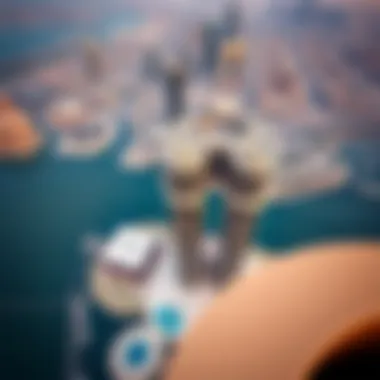
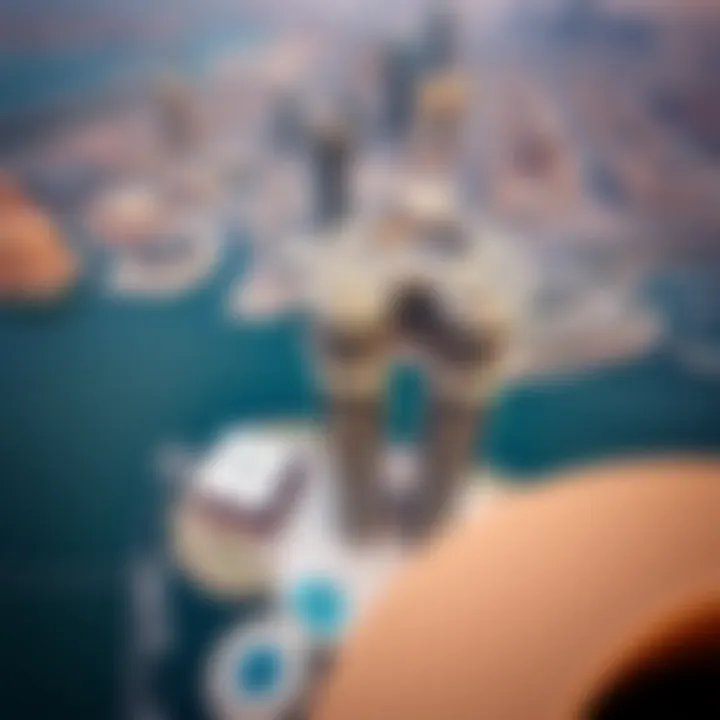
- Thematic Series: A set of photographs that collectively tell a story can be more effective than standalone images. For example, photographs that showcase a city gate tower through various seasons can convey how these structures adapt and remain revered over time.
- Incorporating Local Life: Including elements of local life—be it pedestrians, cafes, or cultural events occurring near the towers—can enrich the narrative. It provides context and helps to humanize these majestic buildings, grounding them in everyday experiences.
- Emphasizing Details: Zooming in on specific details, such as architectural embellishments or the interplay of light and shadow, can create a more intimate connection with the viewer, inviting them to appreciate the meticulous craftsmanship involved.
- Storytelling Through Composition: The way elements are arranged within the frame can guide the viewer’s eye and evoke emotional responses. Using leading lines and symmetry can help convey a sense of harmony or grandeur.
Engaging visual storytelling through photography serves as a portal into the world of city gate towers, inviting audiences to not just look but to truly see and feel the essence of these architectural giants.
"A picture may fill the eye, but it's the story that warms the heart."
This marriage of techniques and storytelling enables photographers to transport the viewer, creating emotional ties and deeper understandings of Dubai's architectural gems. As a result, the photography of city gate towers is not merely about the structures, but it also encapsulates the cultural and urban spirit that defines Dubai itself.
Investment Potential of City Gate Towers
Understanding the investment potential of city gate towers in Dubai is crucial for anyone looking to delve into the real estate market here. The city gate towers, representing a blend of Dubai's historical culture and modern architectural marvels, hold both aesthetic and economic value. Investors, whether seasoned or newcomers in the property scene, should take note of numerous elements that make these structures not just visually captivating, but also financially promising.
The current landscape provides fertile ground for investment opportunities, as the demand for premium properties continues to rise. With increasing urbanization and a continually growing population, more individuals and businesses seek spaces that allow them to thrive. City gate towers serve as ideal locations that cater to this rising demand, ensuring a steady influx of potential tenants and buyers, which enhances their investment appeal.
Moreover, global events and ongoing infrastructural developments in the region further amplify the desirability of these locations. Every corner of Dubai seems to be bustling with activity, thanks to ambitious projects that both enhance and reinterpret the skyline. Investing in city gate towers, therefore, is not merely about acquiring property; it’s about entering a dynamic market that is ripe with potential.
Market Trends and Analysis
To successfully grasp investment opportunities within city gate towers, one must analyze prevalent market trends. Dubai's real estate scene has undergone significant shifts, and understanding these shifts enables investors to make informed decisions.
- Increased Foreign Investment: Dubai has become a magnet for international investors, aided by favorable policies such as long-term visas and ownership regulations.
- Urban Revitalization Initiatives: There’s a push towards redeveloping older areas, which can boost the value of existing properties, including those resembling city gate towers.
- Sustainability Trends: With a growing global emphasis on sustainability, investments in towers that incorporate green technologies and eco-friendly designs are likely to be beneficial long-term.
- Innovative Living Concepts: The rise of mixed-use developments is transforming the landscape, combining residential, commercial, and recreational spaces within city gate towers.
The appetite for unique architectural features and designs in synergy with community-driven spaces creates a niche market that can lead to higher rental yields.
"Real estate in Dubai, particularly in high-demand areas such as city gate towers, offers an astute investor avenues not just for profit but also for cultural engagement."
Opportunities for Property Investment
When exploring opportunities for property investment specifically in and around city gate towers, several key factors should come into play. Firstly, investors need to recognize locations that benefit from strong logistical support, proximity to landmarks, and easy access to transportation networks.
Key opportunities include:
- Residential Units: As more professionals and families relocate to urban centers, acquiring residential units in city gate towers can yield significant returns, given the growing demand.
- Commercial Ventures: Establishing businesses or office spaces within city gate towers can harness foot traffic from residents and visitors alike, especially in mixed-use towers.
- Co-Working Spaces: The rise of remote work has changed office dynamics, creating interest in creating flexible working environments in well-located areas.
Lastly, potential investors should also keep abreast of upcoming projects or refurbishments in the pipeline. Knowing which city gate towers are undergoing renovations or expansions can lead to strategic investment opportunities that capitalize on enhanced property values over time. Investors should survey these developments closely, as timely action can result in significant financial rewards.
Community and Lifestyle Near City Gate Towers
The area surrounding City Gate Towers is not just a backdrop; it's a living, breathing part of Dubai's urban fabric. When we talk about community and lifestyle, we’re diving into what makes this location vibrant and pivotal for residents, businesses, and visitors alike. Here, livability meets luxury, creating a unique blend that caters to both local and international tastes. The synergy between residential spaces and commercial developments enhances the quality of life, making it a desirable place to live and work.
Residential and Commercial Developments
In recent years, the real estate landscape around City Gate Towers has undergone significant transformation. High-end condominiums, stylish apartments, and exclusive villas have sprouted like wildflowers, attracting a diverse mix of residents—from families to young professionals. The architectural design of these residential spaces often reflects the modernity and innovation of the City Gate Towers, marrying aesthetics with functionality.
- Diverse Options: Potential home buyers can find a variety of options, ranging from luxury high-rises to cozy yet chic apartments, catering to different budgets and preferences.
- Proximity to Workplaces: With numerous commercial hubs located nearby, residents benefit from short commutes, which is a major selling point.
- Sustainable Developments: Many of these buildings incorporate green building techniques, promoting sustainability and comfort, enhancing appeal for environmentally conscious buyers.
"Investing in properties around City Gate Towers not only offers a home but also a lifestyle characterized by convenience and modern luxury."
Commercial developments are a vital part of this ecosystem. Shopping centers filled with global brands, boutique stores, and vibrant cafes contribute to a lively atmosphere. Notable shopping locations, like The Dubai Mall and Dubai Marina Mall, are just a short drive away, providing both locals and visitors with an extensive array of retail experiences.
Amenities and Local Attractions
Life near City Gate Towers is punctuated by a wealth of amenities and attractions that cater to every whim and fancy. The blend of leisure, culture, and convenience creates a well-rounded community experience, making it an appealing locale for both investors and residents.
- Parks and Recreation: Green spaces like Zabeel Park and Safa Park offer a breath of fresh air amid the urban hustle. These parks serve as communal gathering spaces, with jogging trails, picnic spots, and more.
- Dining Options: An eclectic mix of dining establishments ranges from fine dining experiences to casual eateries, making it a foodie paradise. Local favorites like Al Hallab Restaurant and Catering and global cuisines are easily accessible, ensuring a delightful culinary journey.
- Cultural Spots: The proximity to cultural hotspots such as Dubai Opera and Art Dubai contributes to the vibrant cultural landscape. These venues host performances, art exhibitions, and community events, fostering a sense of belonging.
The lifestyle surrounding City Gate Towers is characterized by accessibility, luxury, and community spirit, setting a strong foundation for both current and future residents. As the neighborhood continues to evolve, the allure of living and investing in this area remains robust, offering unique opportunities for those eager to embrace the Dubai lifestyle.
Challenges Facing City Gate Towers
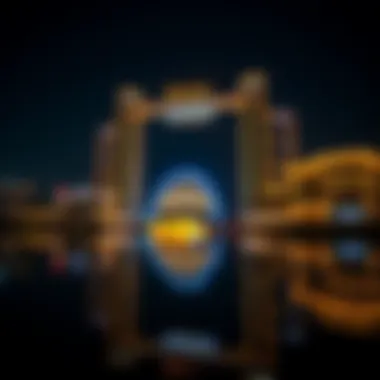
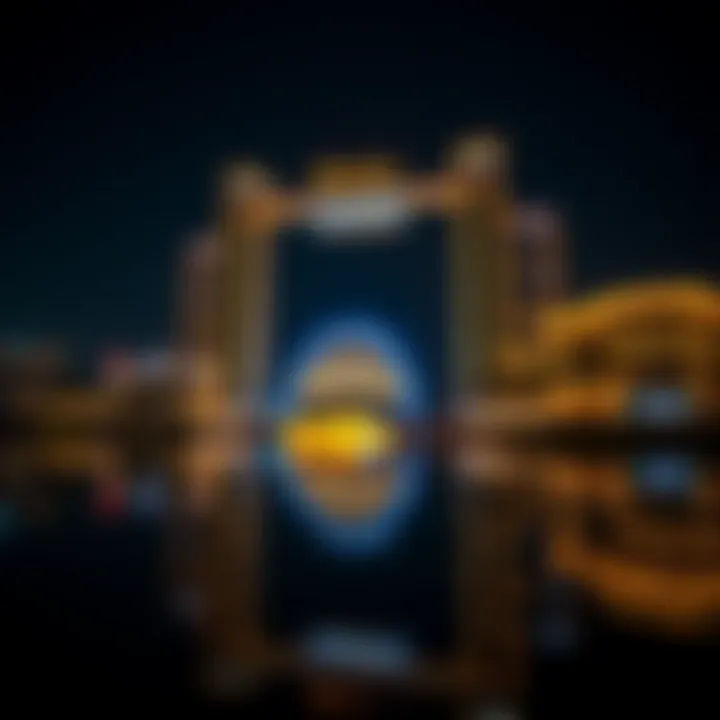
The City Gate Towers in Dubai are not just architectural marvels but also form a pivotal part of the urban landscape. However, in this rapidly evolving city, these structures confront significant challenges. Understanding these challenges is critical for stakeholders, including investors, property managers, and home buyers, as it directly affects their longevity, appeal, and value in the market.
Urban Development Pressures
Dubai is a city known for its constant growth and transformation. As the landscape evolves, the City Gate Towers face the pressure of urban development. Developers are constantly eyeing plots for new high-rises or commercial complexes, which can lead to changes in the neighborhood dynamics.
The encroachment of newer buildings may diminish the prominence of these towers or overshadow their unique design features. Additionally, increased traffic and population density can significantly impact the accessibility and desirability of areas surrounding these towers.
To navigate these urban challenges, it is fundamental for city planners and developers to ensure that any new developments maintain a balance between modernity and the historical essence of existing structures. Whenever there's a proposal for a new development near these towers, assessments must include considerations of how they will integrate rather than isolate the towers from their urban context.
“Preserving the integrity and significance of the City Gate Towers amid relentless urban expansion is essential for safeguarding Dubai's architectural heritage.”
Preservation and Maintenance Issues
Maintaining the structural and aesthetic integrity of the City Gate Towers brings a unique set of challenges. Over the years, wear and tear are inevitable and, when combined with Dubai’s harsh climate, these structures require consistent upkeep.
Key factors influencing preservation include:
- Environmental Effects: Factors such as sandstorms and humidity can accelerate the deterioration of building materials. Regular maintenance schedules must be developed to address these concerns effectively.
- Financial Investment: Property managers must allocate ample budgets for restoration and maintenance. However, securing funding can often be tricky as investments are prioritized for more profitable ventures.
- Regulatory Compliance: New regulations concerning safety and sustainability means that periodic inspections and updates on the buildings are crucial. Compliance can incur additional costs, which may deter some investors.
Ultimately, addressing preserving these towers is not simply about financial concerns; it's also about cultural legacy. Ensuring the City Gate Towers maintain their charm requires a joint effort from architects, local authorities, and the community, thereby fostering a collective ownership of Dubai's architectural narrative.
Future Trends in City Gate Architecture
The world of urban design is constantly shifting, like sand in the desert, and the architecture of city gate towers in Dubai is no exception. As cities grow and evolve, so must their architectural expressions. The future trends in city gate architecture unveil the interplay between innovation, sustainability, and cultural identity. This section explores how upcoming developments are not just shaping the aesthetics but also addressing the practical needs of a modern urban environment.
Anticipated Developments and Innovations
As we peer into the crystal ball of architectural developments, several anticipated innovations stand out. Vertical gardens are making waves, promoting biodiversity within dense urban settings. Imagine a city gate tower humming with life, adorned with greenery that not only beautifies but also improves air quality. These vertical landscapes can provide residents and visitors with spaces that connect more closely to nature.
Furthermore, smart building technologies are frothing like a pot about to boil. Automated systems controlled by artificial intelligence allow for improved energy efficiency and enhanced living experiences. Features such as smart lighting, climate control, and security systems can make everyday life in these towers more comfortable and safe, thereby attracting potential investors and residents alike.
Additionally, community-focused spaces are gaining traction. Developers are increasingly considering not just the tower itself but the interactions it fosters. Public plazas, communal gardens, and mixed-use areas are being designed as extensions of the buildings, increasing their appeal as lifestyle hubs. This move towards more integrated development demonstrates a broader trend in architecture: creating environments that cater to the social as well as the personal.
Incorporating local cultural elements into design is vital. By using traditional patterns, materials, and motifs, architects can ensure these new towers tell their own stories while contributing to the cultural tapestry of Dubai.
Impact of Technology on Design
The advent of cutting-edge technology is having a profound impact on the design of city gate towers. One key aspect here is the use of Building Information Modeling (BIM), which allows architects to create digital replicas of buildings that can be modified before construction begins. This helps to catch potential issues early on, saving both time and resources.
3D printing is another game-changer. Architects can create intricate architectural components with precision and reduce waste significantly. Furthermore, such advancements could lower costs, making sustainable building practices more accessible to a broader range of developers.
Sustainability is also becoming an indispensable principle in architectural design. Cutting-edge technologies such as solar façades and energy-harvesting windows are creating office spaces that generate more energy than they consume. This trend is not just environmentally friendly; it represents a smart investment too, appealing to green-conscious buyers and renters.
With these innovations in play, city gate towers are not merely structures; they are evolving by becoming living entities that adapt to the needs of their inhabitants and the environment.
As these trends continue to evolve, the essence of Dubai’s architectural identity will solidify, creating spaces that inspire connectivity, sustainability, and a reflection of the culture from which they sprang. This forward-thinking approach will resonate not only with investors, property managers, and home buyers but with the greater Dubai community as a whole, ensuring that these towers remain relevant for generations to come.
End: The Living Legacy of City Gate Towers
The City Gate Towers of Dubai stand as not merely architectural marvels but as symbols encapsulating the city's journey—an evolution intertwining opulence with a touch of its storied past. As we dive into the heart of their significance, the discussion extends beyond mere brick and mortar. It probes into the essence of what these structures represent and their lasting impact on urban aesthetics and identity.
Integration of Tradition and Modernity
Within the bustling landscape of Dubai, integrating tradition and modernity exemplifies the delicate balance that City Gate Towers strive to achieve. This architectural dialogue draws from the region's rich history while embracing forward-thinking design principles. For instance, elements such as intricate facades and traditional motifs often sit harmoniously with sleek lines and cutting-edge materials. This juxtaposition serves not only to honor the heritage of the Emirati culture but also reflects a progressive urban environment.
Consider a tower designed with solar panels nestled within its design. At first glance, it showcases sleek glass and steel exteriors, but upon closer inspection, it incorporates patterns reminiscent of age-old Islamic artistry. This thoughtful infusion connects the modern observer back to the deep cultural roots, sparking appreciation and curiosity about the nuances of the past.
The Evolving Relationship with Urban Space
City Gate Towers don’t just occupy physical space; they interact with it in ways that redefine urban living. The relationship between these towers and their surroundings evolves as the city continues to grow. Previously, these structures were stand-alone entities; however, they are increasingly becoming integral parts of larger urban networks.
"The configuration of space around these towers contributes significantly to the sense of community, lifestyle, and commerce, showcasing a city that thrives on connectivity."
As urban planning progresses, these towers adapt to incorporate more public spaces, parks, and communal areas that encourage social interaction. For investors and property managers, the proximity to these vibrant spaces increases the appeal of City Gate Towers, enhancing property value and livability. Understanding this evolving dynamic can reveal profitable opportunities, guiding strategic decisions in investment.
In summary, the City Gate Towers of Dubai epitomize a rich tapestry woven from the threads of history and modern ambition. They remind us that as urban landscapes transform, the dialogues between tradition and innovation need not exist in isolation. Rather, they forge a legacy that future generations will continue to admire and cherish. The photographs capturing these structures only serve as a visual testament to their enduring impact, preserving not just images but the very soul of a rapidly changing metropolis.















